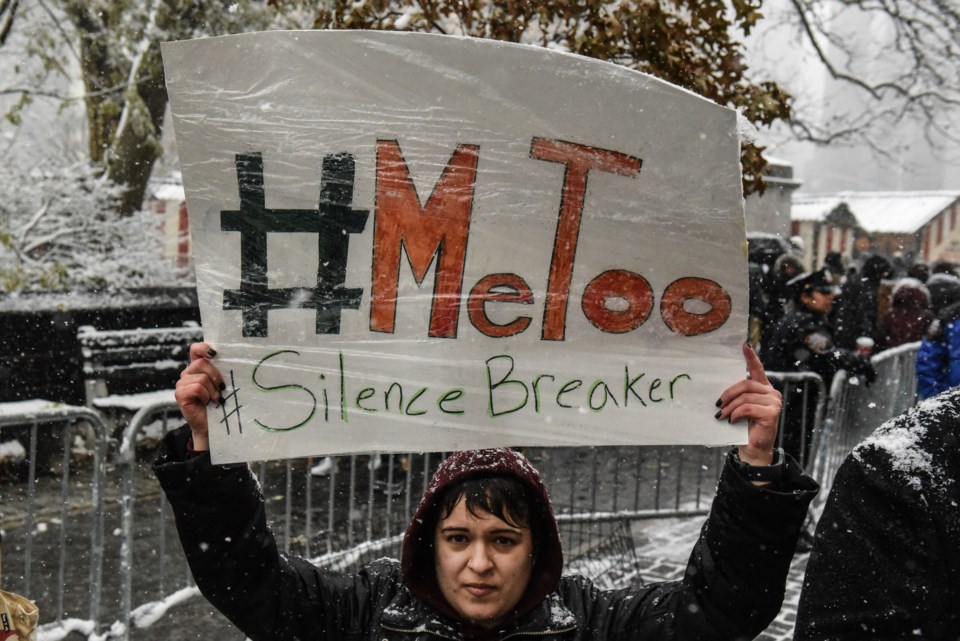When the #MeToo movement exploded in 2017, women everywhere blanketed the internet with stories illustrating just how common sexual harassment is.
For some, there was a hope that publicity and solidarity might encourage more women to speak up and more men to be less inappropriate. At least, that’s what a University of Houston management professor’s early #MeToo surveys revealed.
But the latest survey from Prof. Leanne Atwater and other researchers, teased in this month’s Harvard Business Review (full results are forthcoming in the Journal of Organizational Dynamics), puts a spotlight on how men have responded to women publicly sharing their sexual harassment and the backlash women face as a result.
The researchers conducted anonymous surveys of hundreds of men and women across a number of industries in the United States. What they found is that one-fifth of men were reluctant to hire attractive women, while slightly more expressed reluctance about hiring women for roles that require close interactions with men. More than one-quarter of men also said they did their best to avoid meeting women colleagues one-on-one.
“This is all against the law… You can’t make hiring and these kinds of decisions on the basis of gender,” says Atwater.
“The fact that 20 per cent or more of folks were saying: ‘Yeah, we’re using gender as a criteria to decide who we hire’ was really surprising.”
That’s an increase from Atwater’s 2018 survey, in which 15 per cent of men and women expressed reluctance about hiring women for jobs requiring close interactions with men and 16 per cent of men and 11 per cent of women said they would be reluctant to hire an attractive woman.
The results from a 2018 poll conducted by Sheryl Sandberg’s LeanIn.Org foundation and SurveyMonkey were relatively similar: 30 per cent of men in managerial positions said they were uncomfortable working alone with women colleagues, a significant jump from a pre-#MeToo survey. This is despite the fact that nearly half of men acknowledged a lack of surprise about sexual harassment headlines — one-quarter even said they thought the revelations were just the tip of the iceberg.
“I’m not surprised,” says Karlyn Percil, a women’s leadership trainer who specializes in inclusion and emotional intelligence.
“Gender stereotypes create a no-win situation for women.”
A huge part of these feelings is about fear, says Percil.
“Men have been conditioned culturally, or from a societal perspective, to lead or behave in a certain way, and for years, we have allowed it to go on. Now, we’re asking them to change their behaviour,” she says.
“There is an expectation for women to either fix (the behaviour) or, in some cases, create more of a cushion for men so they don’t feel as threatened.”
Atwater agrees that fear of being falsely accused of sexual harassment is driving some men to second-guess hiring a so-called attractive woman or mentoring a woman one-on-one. Nearly half of the men she surveyed harboured such fears.
And yet, they didn’t have any trouble recognizing problem behaviours. In fact, according to Atwater’s survey, men are more likely than women to label a behaviour like making sexual jokes or commenting on a colleague’s appearance as sexual harassment.
“The idea that men don’t know what inappropriate behaviour is or that women just see everything as sexual harassment doesn’t seem to be borne out by the facts,” she says.
Atwater’s take is that men are overreacting, which she says isn’t surprising considering they hold the balance of power in most workplaces, and watching some powerful men lose their power as a result of “fairly corroborated allegations” can be worrisome.
WATCH: Being a male in the age of #MeToo
Men being more likely than women to label a behaviour sexual harassment is “pretty telling,” says Sarah Molyneaux, a human rights lawyer based in Hamilton, Ont.
It’s not about women not knowing that certain behaviours constitute sexual harassment, she says, but rather “they live in the world. By the time they get to the workplace, they’ve experienced sexual harassment and, whether it’s right or wrong, they can tolerate it.”
So, what would help? Hiring more women, Molyneaux says.
“If we have women in the workplace, that’s a powerful remedy for workplace sexism.”
People should also embrace the uncomfortable conversations, Percil says, and anticipate the fear-based fight-or-flight response.
“If we lead with that in mind, we’ll make a bit more headway, and if we keep that in mind, we will see some change,” she says. “I’m really hoping people step up, be brave enough to have the uncomfortable conversation because that is how we make change.”
Anuradha Dugal, director of community initiatives and policy at the Canadian Women’s Foundation, says change is a slow slog but it’s happening.
Some of the reactions — the men who are reluctant to hire women or work alone with them — are individual responses, says Dugal, and mindsets can sometimes be trickier to change.
“We have to work at the systems level,” she says, which means fostering leadership that is vocal about hiring a diverse group of people and prioritizing their mentorship. These days, there really is no excuse not to have those policies in place and enforced, she says.
“We have all the tools necessary, it’s about applying those tools [so that] individuals are actually encouraged and rewarded when they take part,” Dugal says.
She acknowledges that there’s backlash, but Dugal sees it as a pendulum.
“I believe the pendulum will swing back again.”
- Global News
